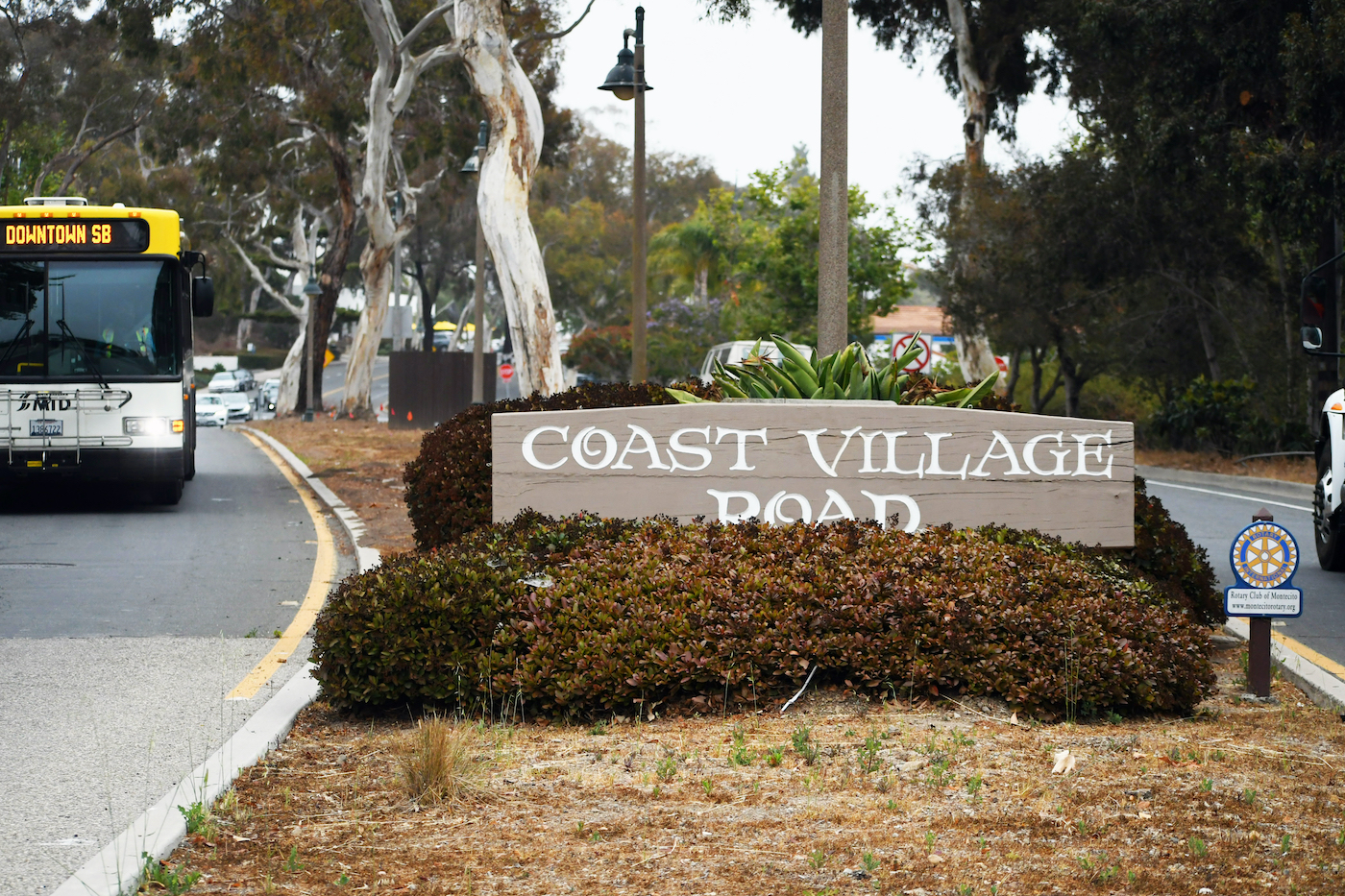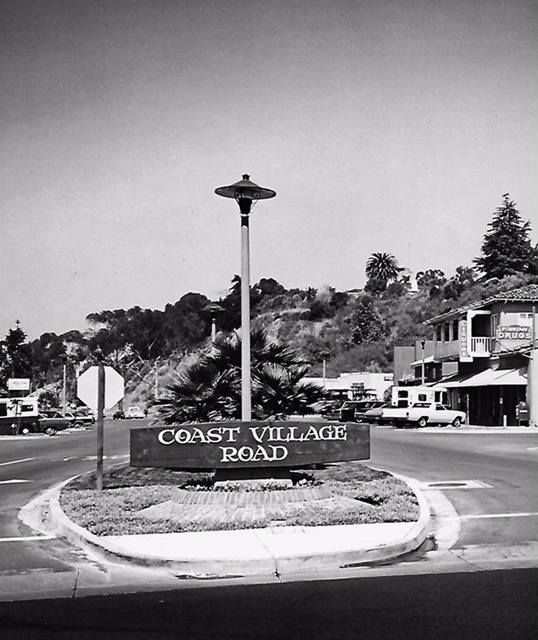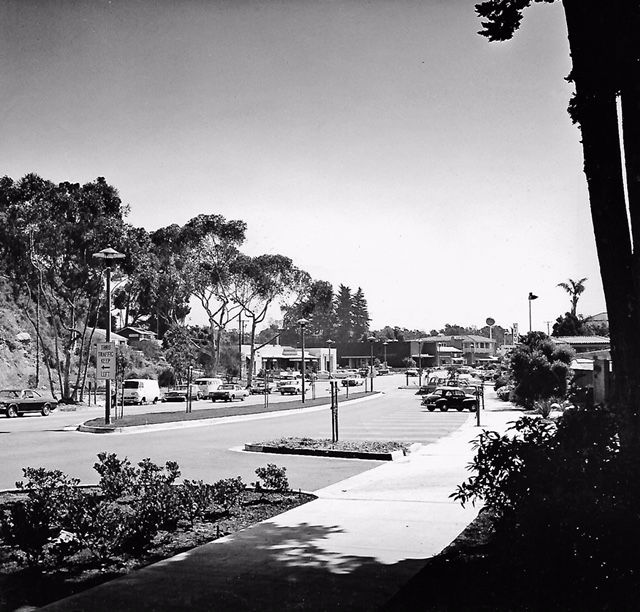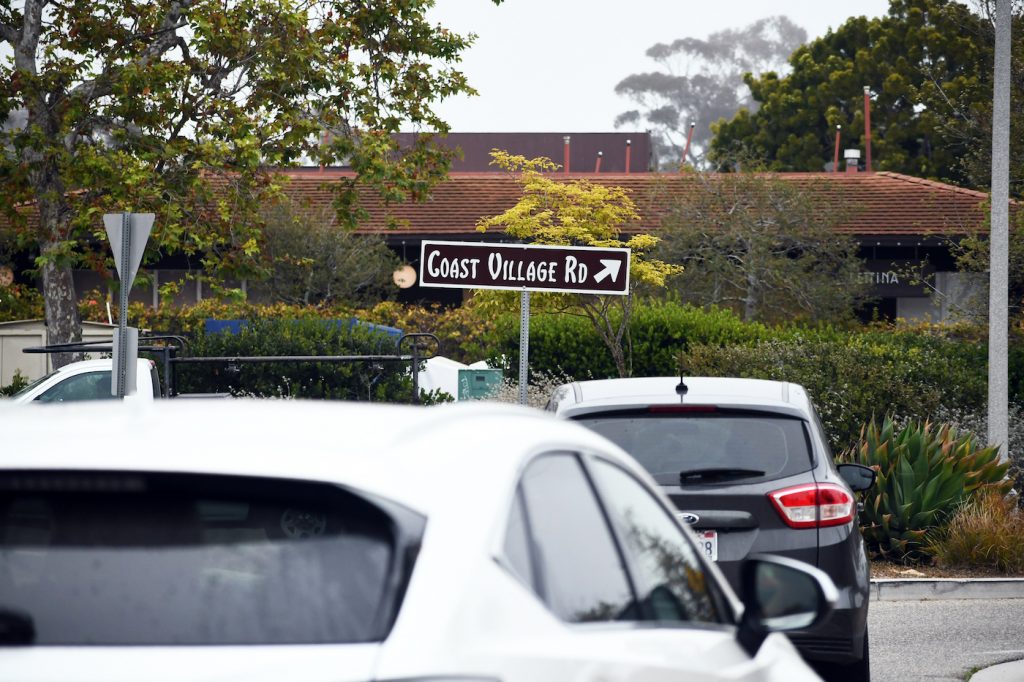A New Path for the Revitalization of Coast Village Road

After more than a year helping many of their business constituents navigate through catastrophic blows to business, the Board of Directors of the Coast Village Association has one primary goal for 2021: To form a Community Benefit Improvement District, or CBID, in order to take control of the street’s aesthetics, safety, and marketing ventures.
“We’re really enthusiastic about this, and hope the community, and property owners, will see how great this can be for Coast Village Road and Coast Village Circle,” said board president Bob Ludwick, who, along with a dedicated committee, has been working on the CBID for more than a year.

This isn’t the first time a business-oriented group has created such an improvement district on the road, which is technically within the city of Santa Barbara; the street improvements that still stand today, including the separate parking aisles with diagonal parking, the medians, and signage, were built in 1968 via an improvement assessment spearheaded by Michael Towbes and the Coast Village Road Improvement Association.
The road, once called Old Coast Highway, was transformed into an approachable and attractive business district through funds raised from property owners who agreed to assess their properties for an additional annual amount added to their property taxes. Back then it was estimated that there were about three million visitors a year to the street, compared to the 7.2 million counted in 2017.
“We want people to continue to want to be on Coast Village Road, and this is how we get there,” said Ludwick, who has been the Association’s president since its resurrection five years ago.
Ludwick, along with CVA Vice President Rob Miller and board members Trey Pinner, Rick Lemmo, Francois DeJohn, and property owner Jeff Harding, have been pounding the pavement and speaking to property owners along the street the last several months, in an effort to gauge support of the project.
With the Santa Barbara City Council unanimously voting to approve an enabling ordinance related to moving forward with the CBID in March, there is now a two-step process to work through.

The first step is the initiation, which consists of a mail-in ballot of landlords agreeing to have a formal plan submitted to the city for consideration and a subsequent ballot to landlords circulated. The properties on the street are weighted according to parcel size, frontage length, and building size. In order to meet the first threshold, 30% or more of the weighted votes need to agree to move to the “ballot stage” of the process. At the ballot stage, 50%+1 of the weighted ballots returned will establish the district. It’s expected the initiation ballot will be mailed mid-summer, and the official ballot in October.
“So far we have very strong support. We likely won’t be able to win over everyone, even though we truly believe every property will benefit significantly,” Ludwick said. “We believe we have more than the 30% support we need.”
A preliminary version of the CBID’s Management Plan for Coast Village outlines the expected assessments for each of Coast Village Road’s 94 property owners. The assessments range from a few hundred dollars to $17,000 per year, with the average falling around $1,800.
“In our mind this is doable, and the benefit that property owners and businesses will glean, is worth the money,” Ludwick said, adding that some property owners have said they will pay the extra tax, while some plan on passing it on in part or whole to their tenants. The Management Plan will be reviewed and approved by the City Council and City Attorney before it is implemented.
If all goes as planned, and a CBID is approved, the funds will be used for much needed beautification of the road, including:
• tree and vegetation maintenance;
•maintenance of existing and new public spaces;
•installation and maintenance of hanging plants;
•planting flowers throughout the district;
•personnel to manage the in-house or contracted maintenance and/or security teams;
•regular sidewalk and gutter sweeping;
• regular sidewalk steam cleaning;
•enhanced trash emptying (over and above city services);
• timely graffiti removal;
•private security or case workers to respond to homelessness issues, aggressive panhandling, and mentally ill people behaving poorly in the public rights of way.
The CBID will also fund promotional events, banner programs, public art displays, branding and social media, website development, enhancement to the weekly Farmers’ Market, and other marketing tools to bring visitors and locals out to support local businesses. The area has been hit hard the last few years, with the Thomas Fire and Debris Flow closures, the pandemic lockdown, and the steep increase in vehicular traffic caused by the closure of the freeway entrance at Hot Springs.

If the CBID is approved, the Coast Village Association Board will increase in size to accommodate more property owners, business owners, and community members, in order to manage the district. The assessment will be probationary for the first five years, and then lengthen to a 20-year term.
Since its resurrection five years ago, the Coast Village Association has worked to promote business along the street through social media campaigns and events, including the popular Taste of Coast Village in 2019 and the Virtual Cash Mob event at the beginning of the pandemic shutdown, in addition to annual holiday decorating contests, member mixers, and more.
The CVA’s Traffic and Safety Committee has been vital in working with the city on traffic mitigation measures, including adding planters to dissuade speeding down the parking aisles, adding stop signs and a lighted crosswalk to promote pedestrian safety, and being closely involved with the roundabout and freeway widening plans that will inevitably impact the road.
Ludwick describes the CBID as a way to ensure the continuance and extension of the CVA’s important work, which will greatly benefit the businesses as well as the property owners — and their property values — along the road.
“The city has limited resources to deploy on Coast Village for upkeep and improvement, other than occasional maintenance. By collectively contributing to this fund, all properties, businesses, visitors, and locals will benefit from enhanced operations and aesthetics,” Ludwick said, adding that there are over 200 similar business improvement districts in California, including Little Italy in San Diego, Redwood City in the Bay Area, and two districts similar to Coast Village Road in Santa Rosa. “It is the best way for commercial districts to exercise control over their aesthetics and operational destiny.”
For more information about the CVA, visit www.coastvillageroad.com.





